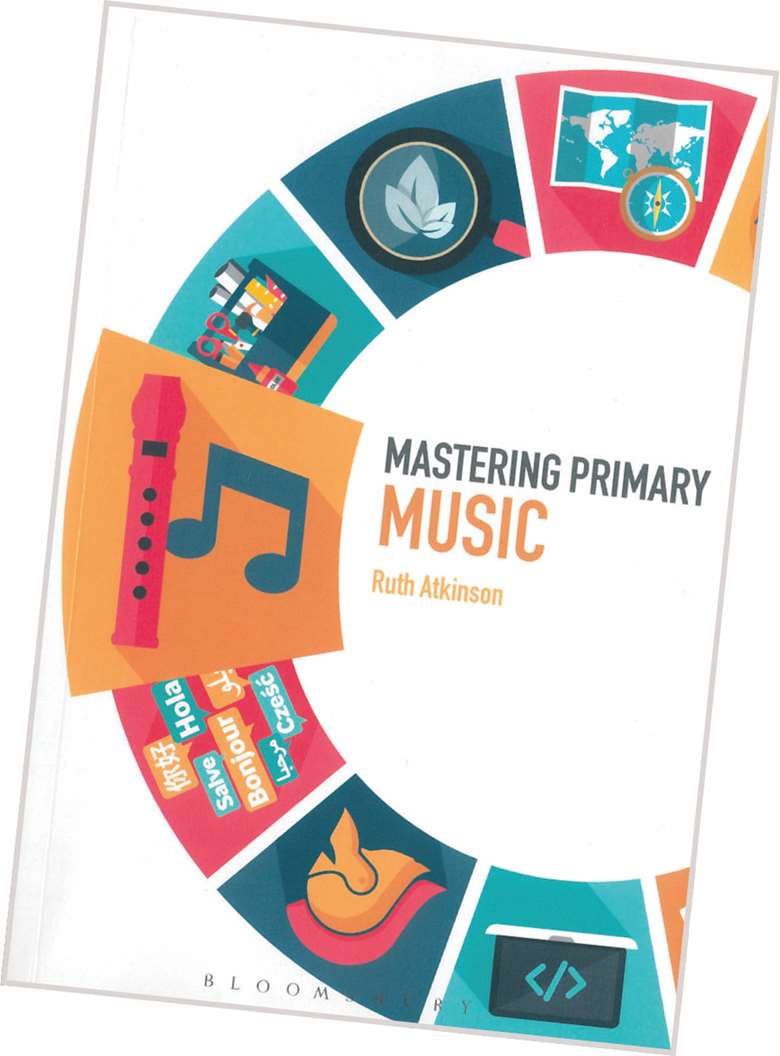Book review
Karen Wallworth
Friday, March 1, 2019
Karen Wallworth reviews Mastering Primary Music by Ruth Atkinson

Mastering Primary Music
The Mastering Primary Education series from Bloomsbury contains 12 books, each covering a different subject area from computing to languages. These books are designed to be utilised by primary school teachers and trainees to shore up confidence in subject areas that might fall outside of their comfort zone, providing them with an in-depth guide that should fill any gaps in their knowledge.
The author
This music book comes from Ruth Atkinson, a lecturer in primary education at Plymouth University's Institute of Education and a multi-instrumentalist. She has a great style to her writing, each line carrying a confident and encouraging tone that will have you murmuring agreement to yourself as you read through the text.
What I enjoyed greatly was how Atkinson breaks down the subject matter and manages to come at the problem from two directions – the non-musical teacher and the musician that is new to teaching – and satisfy both with her solutions. She does this by not assuming that the reader has expert knowledge of music or primary education, deftly explaining terminology and concepts without being incomprehensible or condescending.
Layout
The book is modular in how it is laid out and, past the introduction, there's no particular reason to read the book sequential – each chapter stands by itself without a particular through-line beyond their connection to primary music. Indeed, the book feels more like a collection of essays. This is demonstrated by the way it abruptly ends after the eighth chapter without any concluding thoughts – it would have been nice if there had been some sense of closure at the very end. Instead, you're left with an incredible bibliography that will keep you in reading material for a long time to come.
Each chapter follows a similar layout, beginning with a list of objectives that the author then goes on to demonstrate through a mixture of analysis, factual knowledge, case studies and tasks. I particularly enjoyed Chapter Six, which focusses on promoting creativity in children. In it, the author advances the argument that creativity, especially in children, can thrive with structure and that it need not be understood as some untameable chaotic element. The reader is then taken through lots of small steps towards creativity that can be implemented quite easily into any class, gradually building up through the chapter. Towards the end of this section, teachers are left with clear plans and achievable goals for large-scale projects that might combine curriculum subjects and year groups. This is all rounded off with a lengthy case study, detailing the ups and downs of a particular project that reinforces all of the stated objectives of the chapter. Every chapter is like a neat little package.
Scattered throughout each chapter are small ‘Pause for thought’ boxes, in which Atkinson presents the reader with a question or two without providing a definite answer. It's an exercise in self-reflection, a vital skill for any educator, and its inclusion here acts as an example of the very model of learning that the author is trying to encourage – one of curiosity and self-exploration, yes, but also one that allows itself to be both practical and emotional. The boxes also help to force a break in concentration, to really get you to ruminate on what you've been reading instead of rushing straight into the next section.
A personal perspective
Atkinson brings in her own experiences throughout the book and this personal perspective really adds to the overall feel of being invited in to watch a master at work. She is careful to not let this turn into advocating a ‘do as I do’ approach, trusting that the reader will take her ideas on board and forge their own path. By the end of the book, I definitely felt that I had an understanding of Atkinson's own teaching methods versus the general approach that she was encouraging in me.
If I have anything bad to say about the book, it is that it uses black and white images throughout, which is a shame, as it means that some pages are dominated by big dark patches that detract from the vibrant and affirming text. A small gripe, which should tell you everything you need to know about the overall quality of the book. A greatly informative read that should be considered essential reading material for anyone working with musicians at primary age, and that goes double for anyone working in a primary school.
bloomsbury.com/uk/mastering-primary-music

